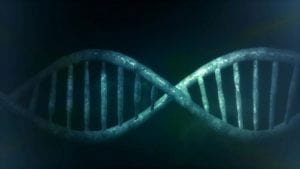Helsmoortel-van der Aa Syndrome (HVDAS) a.k.a. ADNP Syndrome
What is ADNP syndrome/HVDAS?
ADNP syndrome, which is also known as Helsmoortel-van der Aa syndrome (HVDAS), is a complex and extremely rare neuro-developmental disorder that affects the brain and many other areas and functions of the body, including causing behavior disorders. ADNP syndrome is also thought to be one of the most common causes of non-inherited genetic autism.What causes ADNP syndrome/HVDAS?
ADNP syndrome is caused by a non-inherited (de novo) mutation in the ADNP gene, or the Activity Dependent Neuroprotective Protein gene. The protein that is normally produced from this gene helps control the activity of other genes though the chromatin remodeling process, which packages DNA into chromosomes and thereby determines gene expression. It is thought that the ADNP gene mutation results in abnormal chromatin remodeling, which in turn would disrupt the development or function of several of the body’s tissues and organs.What are the symptoms of ADNP syndrome/HVDAS?
The hallmark characteristics of ADNP syndrome are intellectual disability and autism spectrum disorder, along with impaired communication and social interaction. Specifically, individuals with ADNP syndrome may never learn to speak, have anxiety, temper tantrums, ADHD, OCD, or sleep problems. In addition to these social and behavioral problems, ADNP syndrome patients have distinctive facial features and abnormalities in multiple body systems. These include:- Prominent forehead and a high hairline
- Droopy eyelids (ptosis)
- Upslanting or downslanting outside corners of the eyes (fissures)
- Broad nasal bridge
- Thin upper lip
- Vision problems, such as eyes that do not point in the same direction and farsightedness
- Weak muscle tone
- Digestive system problems, such as gastroesophageal reflux, vomiting, and constipation
How is ADNP syndrome/HVDAS diagnosed?
Molecular genetic testing can be done to confirm a diagnosis of ADNP syndrome after a thorough clinical examination and patient history. A recent study also found that most children with ADNP syndrome experience early tooth eruption, which is a unique biomarker to this particular condition and can greatly help in an early diagnosis.What are the available treatments for ADNP syndrome/HVDAS?
Currently, there is no cure nor FDA-approved treatment for ADNP syndrome, although there are clinical trials currently underway to discover new treatments for autism spectrum disorder, the characteristic symptom of ADNP syndrome. As of right now, treatment of individuals with ADNP syndrome should be symptomatic and supportive and include physical therapy, occupational therapy, behavioral therapy, sensory processing therapy, and feeding therapy during early years.Where can I find more information on ADNP syndrome/HVDAS?
ADNP Syndrome/HVDAS Articles



Determined Mother is Raising Awareness of Rare Genetic Disorder Linked to Autism
Patient Worthy Contributor
February 27, 2018
Read More »




